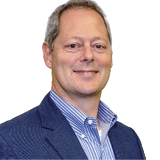Articles
Reverse Logistics

Three Returns Strategies for Improving Omni-channel Retail
Omni-channel retail involves much more than efficient order fulfillment. An easy returns policy is just as important—so much so that it can be the deciding factor for a purchase. That said, it’s one thing to enact a favorable returns policy, and quite another to execute it efficiently. Thanks to omni-channel expectations, shoppers want the ability […]
Read More
Dialing In to the Secondhand Smartphone Market
More than any other mobile device, our gadget-centric society loves smartphones. The next big thing is always right around the corner. And that’s the phone we want. This compelling trend has spawned a budding market for secondhand smartphones. Many consumers are content to chase the next product generation one or two years behind if it […]
Read More
Retailers Get Help With New DOT “Reverse Logistics” Rules
The U.S. Department of Transportation has finalized new shipping requirements aimed at retail stores that return hazmat products to a supplier or manufacturer for a refund. Because the hazmat products found in retail stores typically pose little risk to the public in small amounts, U.S. DOT has created a streamlined, simplified version of the hazmat […]
Read More
Saving Green While Going Green
While good for the environment, supply chain sustainability can also be good for the bottom line if incorporated into a company’s supply chain strategy. In the past, most companies were concerned primarily with forward logistics processes, and, to some degree, returning product to suppliers. Today, companies also focus on reverse logistics processes, not only from […]
Read More
Shedding Light on DIM Weight Returns
Volume shippers who send most of their goods to customers via parcel carriers know that a pound is not always a pound. Dimensional, or DIM, weight is a significant issue that can add up to millions of dollars in shipping expenses. For e-commerce shippers, customer returns are inevitable. Without a clear understanding and plan for […]
Read More
IT Asset Disposition Is the Future of Reverse Logistics
While forward logistics optimizes the flow of goods from the producer to the consumer, reverse logistics inverts that flow from the consumer back to the producer. Most often, this includes warranty recovery, value recovery, repair, redistribution, product recalls, used parts, and replacement materials for refurbishment, service, or product contract returns, and end-of-life recycling. In a […]
Read More
Don’t Just Liquidate, Seek Scalable Solutions
Relaxed return policies create a competitive advantage for retailers but can wreak havoc on reverse logistics. Each year, consumers return hundreds of billions of dollars in merchandise, most of which can’t go back on the shelf due to diminished item condition, damaged packaging, or product obsolescence. No matter the reason, that’s a significant amount of […]
Read More
Channeling the Brick and Click Dilemma
As e-commerce continues to transform consumer behavior, retailers explore hybrid omni-channel supply chain models that deliver the best that online and in-store have to offer.
Read More
How Non-Traditional Service Offerings Are Enhancing Supply Chains
Q: How do non-traditional supply chains differ from traditional supply chains? A: Traditionally, 3PL providers offered a specialized set of services focused around warehousing, order fulfillment, transportation and supply chain logistics. Today, several factors have driven 3PLs to non-traditional services that spread their influence further into the supply chain. Non-traditional supply chain services include various […]
Read More
Unlocking the Hidden Green Value in Mobile Devices
Reverse logistics for mobile devices is more important than ever. Mobile-connected devices exceeded the world’s population in 2014. Wearable technology sales will hit 22 million in 2015, and reach 370 million devices over the next five years, according to analyst CCS Insight. Imagine landfills piled high with smartwatches and connected egg trays, instead of smartphones […]
Read More
Designing a New Strategy for a New Year
With the New Year upon us, retailers and manufacturers need to rethink their supply chains and find new ways to work together, according to the 2016 Future Supply Chain, a report from the Global Commerce Initiative and Capgemini. Here’s a look at some external and internal industry trends from a Lean perspective. It’s not hard […]
Read More
Changing Regulations Regarding Shipping Lithium Batteries Present Unique Hazards for Shippers, Carriers and Receivers
The world of Dangerous Goods (DG) shipping is complex and ever-changing. Take for example the changing regulations regarding shipping lithium batteries. While lithium batteries have delivered superior performance and reliability in an endless array of applications, the same technology that makes them so useful also presents unique hazards for shippers, carriers and receivers. Several significant […]
Read More
Four Reasons Retailers Should Pay Attention to Reverse Logistics
Many retailers have long emphasized agility and cost-efficient movement of freight to stores or customers. However, they often neglect reverse logistics, resulting in missed opportunities for the entire consumer goods supply chain. The multi-channel model—which enables consumers to buy anytime, anywhere—has significantly impacted the retail industry and given rise to the following reasons why retailers […]
Read More
Supply Chain Integration + Collaboration = Time Travel?
Debunking these five myths helps retailers and manufacturers see the real value of dedicated returns management.
Read More
Why Retailers Put Their Sleighbells on in May
The sun is shining and the weather is warm, yet the world’s top retailers are humming holiday tunes and preparing for the busy season ahead. Retailers often prep for holiday delivery logistics months in advance, but 2014 saw them beginning preparations earlier than ever—in May. And who could blame them? We all remember last year’s […]
Read More
Product Returns: 5 Myths Busted
Retailers and manufacturers often avoid dealing with product returns until returned inventory clogs up the warehouse or write-offs hit their P&L. When the returns problem gets big enough to force action, they attempt to deal with it as quickly and cheaply as possible. Executives often avoid returns issues because they believe in one or more […]
Read MoreStreamlining Reverse Logistics
Efficiently managing damaged goods, expired products, and inventory returns can be challenging for shippers. Brian Crow, global marketing manager at chemical management services provider Rinchem Company Inc., offers the following recommendations for proactively and efficiently managing reverse logistics material flows, while significantly reducing costs. 1. Use tech tools to track returned inventory. Many warehouse management […]
Read More
Why Every Manufacturer Needs a Reverse Logistics Solution
The average manufacturer spends nine to 14 percent of total sales on product returns each year, according to an Aberdeen Group study. Yet an estimated 45 percent of manufacturers do not have a reverse logistics solution. They rely on retail or wholesale partners to deal with customer returns, recalls, and seasonal overstocks. Until the mid-1990s, […]
Read More
Bruce Kulp Scores Big
Bruce Kulp is senior vice president, supply chain and refurbishment, at video gaming and consumer electronics retailer Game Stop, in Grapevine, Texas. He has held this position since 2010. Responsibilities: Procurement, distribution, store allocation, transportation and logistics, refurbishment, materials management, research and development. Experience: Vice president of distribution, vice president of logistics, Electronic Data Systems […]
Read More
Defending Against the Global Recall Threat
As international supply chains and distribution networks grow in prevalence and complexity, operating risks and logistics are becoming increasingly difficult to mitigate. The challenge of managing the multitude of variables is compounded by the speed at which today’s supply chain must operate. One key area affected by the global economy is product recalls. The number […]
Read More